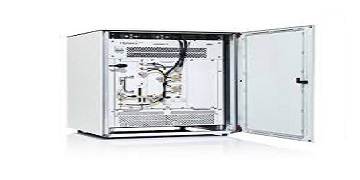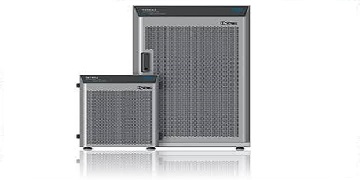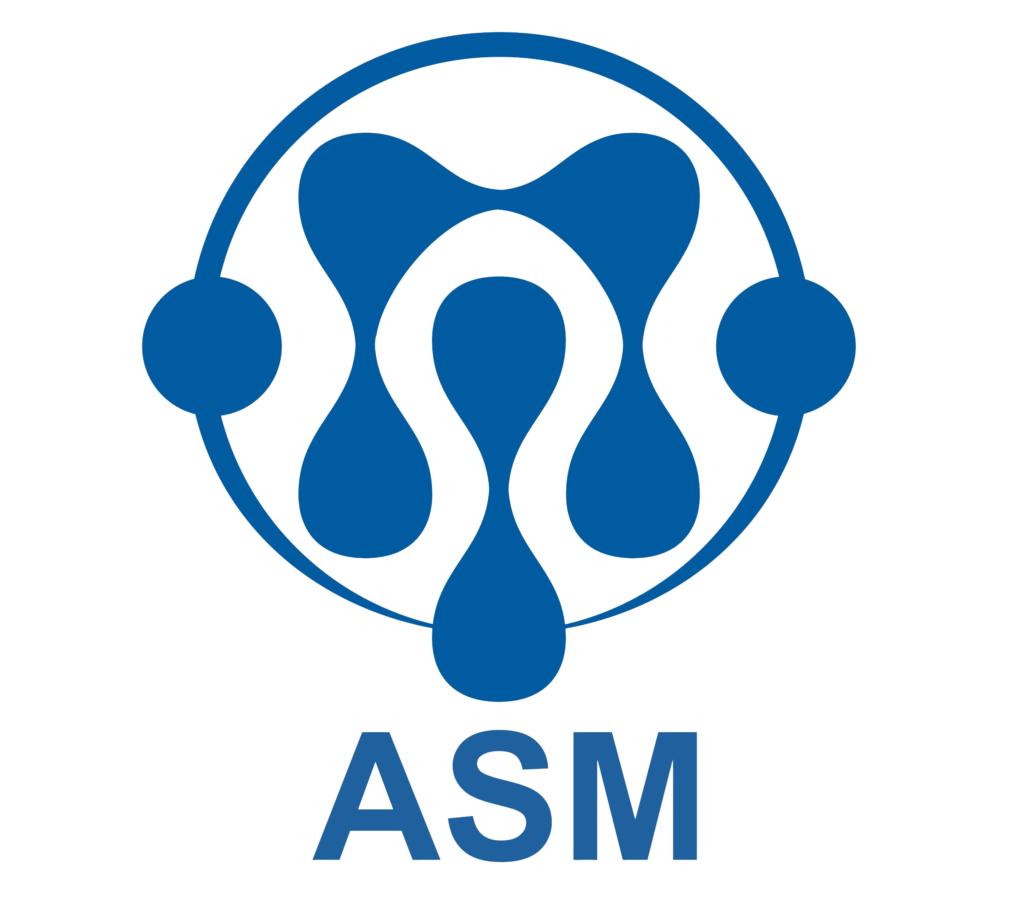Tetra
[/fusion_title][/fusion_builder_column][fusion_builder_column type=”1_1″ background_position=”left top” background_color=”” border_size=”” border_color=”” border_style=”solid” spacing=”yes” background_image=”” background_repeat=”no-repeat” padding=”” margin_top=”0px” margin_bottom=”0px” class=”” id=”” animation_type=”” animation_speed=”0.3″ animation_direction=”left” hide_on_mobile=”no” center_content=”no” min_height=”none”][fusion_slider hover_type=”none” width=”100%” height=”100%” class=”” id=””][fusion_slide type=”image” link=”” linktarget=”_self” lightbox=”yes”]https://asm-co.ir/wp-content/uploads/2016/05/Tetra-header.jpg[/fusion_slide][fusion_slide type=”image” link=”” linktarget=”_self” lightbox=”yes”]https://asm-co.ir/wp-content/uploads/2016/05/Tetra-header-2.jpg[/fusion_slide][/fusion_slider][fusion_text]TETRA (Terrestrial Trunked Radio) is a global standard for digital trunked radio. Secure voice and data transmission and a wide range of features guarantee the adaptability needed to meet the requirements of professional mobile radio. We offer a complete product and service portfolio, including TETRA portables and mobile radios.TETRA Technology
1- The TETRA standard
2- TEDS
3- TETRA over LTE – Broadband evolution
4- Voice services
5- Data services
[/fusion_text][/fusion_builder_column][fusion_builder_column type=”1_1″ background_position=”left top” background_color=”” border_size=”” border_color=”” border_style=”solid” spacing=”yes” background_image=”” background_repeat=”no-repeat” padding=”” margin_top=”0px” margin_bottom=”0px” class=”” id=”” animation_type=”” animation_speed=”0.3″ animation_direction=”left” hide_on_mobile=”no” center_content=”no” min_height=”none”][fusion_title size=”1″ content_align=”left” style_type=”none” sep_color=”” margin_top=”” margin_bottom=”” class=”” id=””]System Elements
[/fusion_title][/fusion_builder_column][fusion_builder_column type=”1_3″ last=”no” spacing=”yes” center_content=”no” hide_on_mobile=”no” background_color=”” background_image=”” background_repeat=”no-repeat” background_position=”left top” hover_type=”none” link=”” border_position=”all” border_size=”0px” border_color=”” border_style=”” padding=”” margin_top=”” margin_bottom=”” animation_type=”” animation_direction=”” animation_speed=”0.1″ animation_offset=”” class=”” id=””][fusion_imageframe lightbox=”no” lightbox_image=”” style_type=”none” hover_type=”none” bordercolor=”” bordersize=”0px” borderradius=”0″ stylecolor=”” align=”none” link=”” linktarget=”_self” animation_type=”0″ animation_direction=”down” animation_speed=”0.1″ animation_offset=”” hide_on_mobile=”no” class=”” id=””] [/fusion_imageframe][/fusion_builder_column][fusion_builder_column type=”2_3″ last=”yes” spacing=”yes” center_content=”no” hide_on_mobile=”no” background_color=”” background_image=”” background_repeat=”no-repeat” background_position=”left top” hover_type=”none” link=”” border_position=”all” border_size=”0px” border_color=”” border_style=”” padding=”” margin_top=”” margin_bottom=”” animation_type=”” animation_direction=”” animation_speed=”0.1″ animation_offset=”” class=”” id=””][fusion_title size=”1″ content_align=”left” style_type=”single solid” sep_color=”” margin_top=”” margin_bottom=”” class=”” id=””]
[/fusion_imageframe][/fusion_builder_column][fusion_builder_column type=”2_3″ last=”yes” spacing=”yes” center_content=”no” hide_on_mobile=”no” background_color=”” background_image=”” background_repeat=”no-repeat” background_position=”left top” hover_type=”none” link=”” border_position=”all” border_size=”0px” border_color=”” border_style=”” padding=”” margin_top=”” margin_bottom=”” animation_type=”” animation_direction=”” animation_speed=”0.1″ animation_offset=”” class=”” id=””][fusion_title size=”1″ content_align=”left” style_type=”single solid” sep_color=”” margin_top=”” margin_bottom=”” class=”” id=””]
IP Node
[/fusion_title][/fusion_builder_column][fusion_builder_column type=”1_3″ last=”no” spacing=”yes” center_content=”no” hide_on_mobile=”no” background_color=”” background_image=”” background_repeat=”no-repeat” background_position=”left top” hover_type=”none” link=”” border_position=”all” border_size=”0px” border_color=”” border_style=”” padding=”” margin_top=”” margin_bottom=”” animation_type=”” animation_direction=”” animation_speed=”0.1″ animation_offset=”” class=”” id=””][fusion_imageframe lightbox=”no” lightbox_image=”” style_type=”none” hover_type=”none” bordercolor=”” bordersize=”0px” borderradius=”0″ stylecolor=”” align=”none” link=”” linktarget=”_self” animation_type=”0″ animation_direction=”down” animation_speed=”0.1″ animation_offset=”” hide_on_mobile=”no” class=”” id=””] [/fusion_imageframe][/fusion_builder_column][fusion_builder_column type=”2_3″ last=”yes” spacing=”yes” center_content=”no” hide_on_mobile=”no” background_color=”” background_image=”” background_repeat=”no-repeat” background_position=”left top” hover_type=”none” link=”” border_position=”all” border_size=”0px” border_color=”” border_style=”” padding=”” margin_top=”” margin_bottom=”” animation_type=”” animation_direction=”” animation_speed=”0.1″ animation_offset=”” class=”” id=””][fusion_title size=”1″ content_align=”left” style_type=”single solid” sep_color=”” margin_top=”” margin_bottom=”” class=”” id=””]
[/fusion_imageframe][/fusion_builder_column][fusion_builder_column type=”2_3″ last=”yes” spacing=”yes” center_content=”no” hide_on_mobile=”no” background_color=”” background_image=”” background_repeat=”no-repeat” background_position=”left top” hover_type=”none” link=”” border_position=”all” border_size=”0px” border_color=”” border_style=”” padding=”” margin_top=”” margin_bottom=”” animation_type=”” animation_direction=”” animation_speed=”0.1″ animation_offset=”” class=”” id=””][fusion_title size=”1″ content_align=”left” style_type=”single solid” sep_color=”” margin_top=”” margin_bottom=”” class=”” id=””]
ACCESSNET IP DIB-500 R4.1
[/fusion_title][/fusion_builder_column][fusion_builder_column type=”1_3″ last=”no” spacing=”yes” center_content=”no” hide_on_mobile=”no” background_color=”” background_image=”” background_repeat=”no-repeat” background_position=”left top” hover_type=”none” link=”” border_position=”all” border_size=”0px” border_color=”” border_style=”” padding=”” margin_top=”” margin_bottom=”” animation_type=”” animation_direction=”” animation_speed=”0.1″ animation_offset=”” class=”” id=””][fusion_imageframe lightbox=”no” lightbox_image=”” style_type=”none” hover_type=”none” bordercolor=”” bordersize=”0px” borderradius=”0″ stylecolor=”” align=”none” link=”” linktarget=”_self” animation_type=”0″ animation_direction=”down” animation_speed=”0.1″ animation_offset=”” hide_on_mobile=”no” class=”” id=””] [/fusion_imageframe][/fusion_builder_column][fusion_builder_column type=”2_3″ last=”yes” spacing=”yes” center_content=”no” hide_on_mobile=”no” background_color=”” background_image=”” background_repeat=”no-repeat” background_position=”left top” hover_type=”none” link=”” border_position=”all” border_size=”0px” border_color=”” border_style=”” padding=”” margin_top=”” margin_bottom=”” animation_type=”” animation_direction=”” animation_speed=”0.1″ animation_offset=”” class=”” id=””][fusion_title size=”1″ content_align=”left” style_type=”single solid” sep_color=”” margin_top=”” margin_bottom=”” class=”” id=””]
[/fusion_imageframe][/fusion_builder_column][fusion_builder_column type=”2_3″ last=”yes” spacing=”yes” center_content=”no” hide_on_mobile=”no” background_color=”” background_image=”” background_repeat=”no-repeat” background_position=”left top” hover_type=”none” link=”” border_position=”all” border_size=”0px” border_color=”” border_style=”” padding=”” margin_top=”” margin_bottom=”” animation_type=”” animation_direction=”” animation_speed=”0.1″ animation_offset=”” class=”” id=””][fusion_title size=”1″ content_align=”left” style_type=”single solid” sep_color=”” margin_top=”” margin_bottom=”” class=”” id=””]
DIB-R5 Digital Integrated Base Station
[/fusion_title][/fusion_builder_column][fusion_builder_column type=”1_3″ last=”no” spacing=”yes” center_content=”no” hide_on_mobile=”no” background_color=”” background_image=”” background_repeat=”no-repeat” background_position=”left top” hover_type=”none” link=”” border_position=”all” border_size=”0px” border_color=”” border_style=”” padding=”” margin_top=”” margin_bottom=”” animation_type=”” animation_direction=”” animation_speed=”0.1″ animation_offset=”” class=”” id=””][fusion_imageframe lightbox=”no” lightbox_image=”” style_type=”none” hover_type=”none” bordercolor=”” bordersize=”0px” borderradius=”0″ stylecolor=”” align=”none” link=”” linktarget=”_self” animation_type=”0″ animation_direction=”down” animation_speed=”0.1″ animation_offset=”” hide_on_mobile=”no” class=”” id=””] [/fusion_imageframe][/fusion_builder_column][fusion_builder_column type=”2_3″ last=”yes” spacing=”yes” center_content=”no” hide_on_mobile=”no” background_color=”” background_image=”” background_repeat=”no-repeat” background_position=”left top” hover_type=”none” link=”” border_position=”all” border_size=”0px” border_color=”” border_style=”” padding=”” margin_top=”” margin_bottom=”” animation_type=”” animation_direction=”” animation_speed=”0.1″ animation_offset=”” class=”” id=””][fusion_title size=”1″ content_align=”left” style_type=”single solid” sep_color=”” margin_top=”” margin_bottom=”” class=”” id=””]
[/fusion_imageframe][/fusion_builder_column][fusion_builder_column type=”2_3″ last=”yes” spacing=”yes” center_content=”no” hide_on_mobile=”no” background_color=”” background_image=”” background_repeat=”no-repeat” background_position=”left top” hover_type=”none” link=”” border_position=”all” border_size=”0px” border_color=”” border_style=”” padding=”” margin_top=”” margin_bottom=”” animation_type=”” animation_direction=”” animation_speed=”0.1″ animation_offset=”” class=”” id=””][fusion_title size=”1″ content_align=”left” style_type=”single solid” sep_color=”” margin_top=”” margin_bottom=”” class=”” id=””]
Smartone
[/fusion_title][/fusion_builder_column][fusion_builder_column type=”1_3″ last=”no” spacing=”yes” center_content=”no” hide_on_mobile=”no” background_color=”” background_image=”” background_repeat=”no-repeat” background_position=”left top” hover_type=”none” link=”” border_position=”all” border_size=”0px” border_color=”” border_style=”” padding=”” margin_top=”” margin_bottom=”” animation_type=”” animation_direction=”” animation_speed=”0.1″ animation_offset=”” class=”” id=””][fusion_imageframe lightbox=”no” lightbox_image=”” style_type=”none” hover_type=”none” bordercolor=”” bordersize=”0px” borderradius=”0″ stylecolor=”” align=”none” link=”” linktarget=”_self” animation_type=”0″ animation_direction=”down” animation_speed=”0.1″ animation_offset=”” hide_on_mobile=”no” class=”” id=””] [/fusion_imageframe][/fusion_builder_column][fusion_builder_column type=”2_3″ last=”yes” spacing=”yes” center_content=”no” hide_on_mobile=”no” background_color=”” background_image=”” background_repeat=”no-repeat” background_position=”left top” hover_type=”none” link=”” border_position=”all” border_size=”0px” border_color=”” border_style=”” padding=”” margin_top=”” margin_bottom=”” animation_type=”” animation_direction=”” animation_speed=”0.1″ animation_offset=”” class=”” id=””][fusion_title size=”1″ content_align=”left” style_type=”single solid” sep_color=”” margin_top=”” margin_bottom=”” class=”” id=””]
[/fusion_imageframe][/fusion_builder_column][fusion_builder_column type=”2_3″ last=”yes” spacing=”yes” center_content=”no” hide_on_mobile=”no” background_color=”” background_image=”” background_repeat=”no-repeat” background_position=”left top” hover_type=”none” link=”” border_position=”all” border_size=”0px” border_color=”” border_style=”” padding=”” margin_top=”” margin_bottom=”” animation_type=”” animation_direction=”” animation_speed=”0.1″ animation_offset=”” class=”” id=””][fusion_title size=”1″ content_align=”left” style_type=”single solid” sep_color=”” margin_top=”” margin_bottom=”” class=”” id=””]
DWS – Dispather system
[/fusion_title][/fusion_builder_column][fusion_builder_column type=”1_3″ last=”no” spacing=”yes” center_content=”no” hide_on_mobile=”no” background_color=”” background_image=”” background_repeat=”no-repeat” background_position=”left top” hover_type=”none” link=”” border_position=”all” border_size=”0px” border_color=”” border_style=”” padding=”” margin_top=”” margin_bottom=”” animation_type=”” animation_direction=”” animation_speed=”0.1″ animation_offset=”” class=”” id=””][fusion_imageframe lightbox=”no” lightbox_image=”” style_type=”none” hover_type=”none” bordercolor=”” bordersize=”0px” borderradius=”0″ stylecolor=”” align=”none” link=”” linktarget=”_self” animation_type=”0″ animation_direction=”down” animation_speed=”0.1″ animation_offset=”” hide_on_mobile=”no” class=”” id=””] [/fusion_imageframe][/fusion_builder_column][fusion_builder_column type=”2_3″ last=”yes” spacing=”yes” center_content=”no” hide_on_mobile=”no” background_color=”” background_image=”” background_repeat=”no-repeat” background_position=”left top” hover_type=”none” link=”” border_position=”all” border_size=”0px” border_color=”” border_style=”” padding=”” margin_top=”” margin_bottom=”” animation_type=”” animation_direction=”” animation_speed=”0.1″ animation_offset=”” class=”” id=””][fusion_title size=”1″ content_align=”left” style_type=”single solid” sep_color=”” margin_top=”” margin_bottom=”” class=”” id=””]
[/fusion_imageframe][/fusion_builder_column][fusion_builder_column type=”2_3″ last=”yes” spacing=”yes” center_content=”no” hide_on_mobile=”no” background_color=”” background_image=”” background_repeat=”no-repeat” background_position=”left top” hover_type=”none” link=”” border_position=”all” border_size=”0px” border_color=”” border_style=”” padding=”” margin_top=”” margin_bottom=”” animation_type=”” animation_direction=”” animation_speed=”0.1″ animation_offset=”” class=”” id=””][fusion_title size=”1″ content_align=”left” style_type=”single solid” sep_color=”” margin_top=”” margin_bottom=”” class=”” id=””]
DVRS
Tetra Voice recorder
[/fusion_title][/fusion_builder_column][fusion_builder_column type=”1_1″ background_position=”left top” background_color=”” border_size=”” border_color=”” border_style=”solid” spacing=”yes” background_image=”” background_repeat=”no-repeat” padding=”” margin_top=”0px” margin_bottom=”0px” class=”” id=”” animation_type=”” animation_speed=”0.3″ animation_direction=”left” hide_on_mobile=”no” center_content=”no” min_height=”none”][fusion_tabs design=”classic” layout=”horizontal” justified=”yes” backgroundcolor=”” inactivecolor=”” bordercolor=”” class=”” id=””][fusion_tab title=”Benefits” icon=””]Use of existing IP infrastructure
- The IP-based interconnection of the individual network elements allows the use of existing IP infrastructure, which makes extra transmission links superfluous and cuts down on costs.
- High-quality IP networks for voice communications already exist at many sites.
Secure, reliable and failure-resistant
- Excellent voice quality due to the use of digital TETRA technology
- Support of TETRA encryption (E2EE and AIE) and authentication
- Unsurpassed system reliability due to intelligent redundancy concept and robust system design
Network architecture designed for flexibility
- Distributed or centralized network topology
- Ultimate flexibility: Distribution of gateways and network transitions can be customized across decentralized network nodes
- ACCESSNET‑T IP can be flexibly scaled to meet customer’s requirements – from single-cell systems up to nationwide networks
Flexibility for tailor-made TETRA solutions.
The unique, modular system design of the ACCESSNET-T IP from Hytera Mobilfunk GmbH allows designing the TETRA system exactly according to customer-specific requirements. The system design allows distributed as well as centralised architectures.
With centralised systems, switching of voice and data as well as the transition to external networks such as PABX/PSTN is implemented at a central point in the system. The centralised switching architecture is the classic model for switching in a radio system.
The distributed variant of the ACCESSNET-T IP provides for a larger flexibility in designing the system due to the possibility of implementing switching functions and gateways at any desired point in the system; this is done by distributing the operative function blocks to the various network elements. Apart from the increased flexibility, the distributed architecture offers an increased robustness of the systems against the failure of individual locations.

Chracteristics of the distributed switching function
- No separate or proprietary
switching hardware in the TETRA network needed - Highest robustness against failure of the transmission network by distributed intelligence
- Re-arrangement of base stations and split-offs of network sections possible (sub-networks)
- Useable for mobile deployment scenarios (military, Public Safety and humanitarian missions)
- Flexible deployment of system gateways / interfaces, even within base stations
Characteristics of the centralised switching architecture
- COTS platform for switching software
- Central high capacity telephony and
application gateways
(Session Initiation Protocol, SIP) - Highest availability for central network node (IPN) through redundant design of all critical components
- redundant connection of PABX and Applications
- Cost-effective use of server hardware
– Multiple functions are combined on
high-performing servers
– Servers provide high capacity gateways - Optimised bandwidth on the radio sites
TETRA applications
Connecting feature-rich applications – create powerful solutions.
The ACCESSNET-T Common Application Programming Interface (A-CAPI) makes it possible for applications to use the powerful functions of the ACCESSNET-T IP mobile radio system. Due to A-CAPI, the applications can participate in the communication via the trunked radio system just like a radio subscriber with voice radio and data radio transmissions. Examples of applications are dispatchers/control rooms, voice recorders, SCADA systems (Supervisory Control and Data Acquisition) and ITCS (Intermodal Transport Control System).
Dispatchers
TETRA control rooms with ACCESSNET-T IP
Dispatchers are an important component of the ACCESSNET-T IP TETRA radio system. They are required to control and conduct the radio subscribers and their communication in the network. In addition they can be used as logistic and control rooms or they can serve as a centre for monitoring alarm functions.
The dispatcher administrates all the field data, call groups and radio subscribers in the TETRA network, thus facilitating the management of the mission communication.
The working environment of the dispatcher is made up of a PC workstation with the dispatcher software, the corresponding audio accessories and optional expansions such as a foot-operated PTT button or headsets. To be able to meet the requirements of the different user groups, the dispatcher can flexibly be adapted optimally to the various demands in terms of availability, scalability and network size.
Voice Recorder
Voice and data recording (voice and SDS recording)
Primarily in TETRA systems that serve the public safety, a proof of communication may be a legal requirement for radio operation. The use of voice and data recording helps reconstructing sequences and procedures afterwards and thus makes it possible to clarify circumstances.
The Voice Recorder is a professional multi-channel voice and data recording system that is especially tailored to archiving digital audio data and short messages (SDS). Digital audio data from a TETRA network are efficiently recorded in the TETRA-encoded format of 8 kbit/s. This ensures the largest possible recording duration without recoding to a more significant bit format. Recorded audio data can be played back using the playback function of the voice recorder or exported to downstream IT applications.
AVL
Locating persons and mobile stations via Automatic Vehicle Location (AVL)
Using AVL-expansions, it is possible to display topical position data of mobile stations on a map. In this case, the mobile stations determine their position via GPS at adjustable intervals and automatically send these data via SDS to the dispatcher.
At the dispatcher workstation, these data are visualized on a map. In this way, apart from the topical position, movement profiles for individual mobile stations can also be displayed to optimize operation procedures and processes. The AVL system can either be used as a dispatching and assignment control unit to control and manage vehicle fleets – or it serves as an alarming centre for monitoring, alarming or control functions.
In this way it is possible to record numerous operational vehicle characteristics such as the filling level in gritting trucks. These data are transmitted to the control room via ACCESSNET-T IP and visualized. Due to the information being refreshed continuously, vehicle fleet operators and dispatchers can optimally plan and control the operations of their vehicles.
SCADA
Remote monitoring and telecontrol via Supervisory Control and Data Acquisition (SCADA)
The term SCADA refers to the concept of monitoring and controlling diverse technical processes, generally the control and monitoring of systems that are located at a distance of the control room (remote monitoring and telecontrol). Data acquisition generally starts at a local control system and includes the coupling to measuring instruments and status information, for example switch settings. The data are then forwarded to the superordinate instance of the SCADA system, where they are presented in a more user-friendly format.
To operate a SCADA system, the data transmissions between the components of the SCADA system must be reliable and fast. Only in this way is a remote control of technical sequences possible reliably and automatically via control sequences.
Smart metering & AMR
Automated Meter Reading (AMR) and Smart Metering Technology (intelligent counters)
Many countries already have a legislation determining that for reasons of cost control the consumer must be given the possibility of querying the power and gas consumption from the utility provider on a daily basis. With its TETRA systems, Hytera Mobilfunk offers a cost-efficient solution for small and regional utility providers that can be used as a reliable transmission platform to transmit the data recorded by the intelligent counters to the centre.[/fusion_tab][fusion_tab title=”NMS” icon=””]
Network Management (NMS)
Swiss army knife for your mobile communication.
The Network Management System (NMS) can be used to manage and monitor the infrastructure and various services of an ACCESSNET-T IP network. The NMS is a distributed multi-client and multi-server system with integrated databases, whose modular design can be scaled according to the respective requirements and size of the network.
With this software package, you manage all of the functions, network elements and subscribers of your TETRA mobile radio solution from Hytera Mobilfunk GmbH. For each TETRA system, we supply an individual NMS package with all the required modules. Thanks to the modular design, you can expand it as needed and optimally adapt it to your system.
NMS at a glance
- User-friendly software for managing your Hytera TETRA mobile radio solution
- Flexible management of all functions, network elements and subscribers
- Modular structure scalable to any system size
- Extremely configurable data access via robust IP networking
- Maximum data availability and security
- Highly automated, dependable processes
- Uncomplicated coupling and monitoring of external system components
- Access control to the NMS to protect the system
- User interface (GUI) of NMS applications already available in many languages, additional languages possible upon customer request
Overview of the Technology
Our NMS is based on an almost infinitely scalable client-server architecture. This allows the system to provide you access from a central location as well as from distributed locations within the ACCESSNET-T IP network – no matter how complex your mobile radio solution is designed.
All the clients access the current data provided by NMS servers via IP network. The decentral architecture of the NMS protects your mobile radio network against data losses, optimizes operational sequences and offers you demand-tailored, highly configurable control functions.
Strong through Standardization
The functions of the Network Management System are distributed based on the standardized network management model “FCAPS” (Fault, Configuration, Administration/Accounting, Performance and Security Management) in accordance with ITU-T M.3010 (02/2000, International Telecommunication Union).
The following functions are available via the network management system:
- Fault Management
- Configuration Management
- Subscriber Management and a billing interface as part of Accounting Management
- Performance Management
- Security Management
